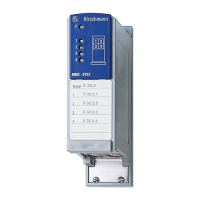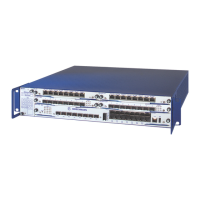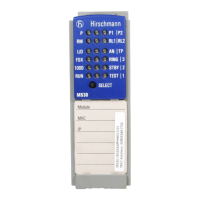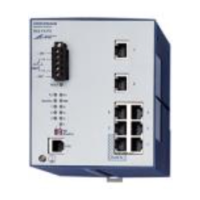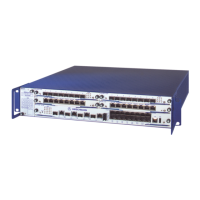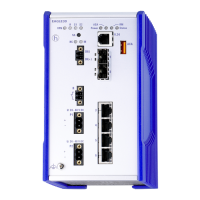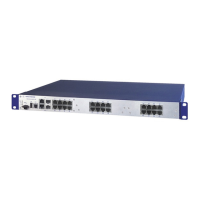Command Structure 5
© 2001- 2006 Hirschmann Automation and Control GmbH. All Rights Reserved.
To use spaces as part of a name parameter, enclose it in double quotes. For example, the
expression "System Name with Spaces" forces the system to accept the spaces.
Parameters may be mandatory values, optional values, choices, or a combination.
<parameter>. The <> angle brackets indicate that a value must be entered in place
of the brackets and text inside them.
[parameter]. The [] square brackets indicate an optional parameter that may be
entered in place of the brackets and text inside them.
choice1 | choice2. Vertical bars ‘|’ separate alternative, mutually exclusive, elements.
The {} curly braces indicate that a parameter must be chosen from the list of choices.
Braces within square brackets [{}] indicate a required choice within an optional element.
1.1.3 Values
Ipaddr This parameter is a valid IP address. Presently the IP address can be entered in
following formats:
a (32 bits)
a.b (8.24 bits)
a.b.c (8.8.16 bits)
a.b.c.d (8.8.8.8)
In addition to these formats, decimal, hexidecimal and octal formats are supported
through the following input formats (where n is any valid hexidecimal, octal or deci-
mal number):
0xn (CLI assumes hexidecimal format)
0n (CLI assumes octal format with leading zeros)
n (CLI assumes decimal format)
Macaddr The MAC address format is six hexadecimal numbers separated by colons, for
example 00:06:29:32:81:40.
Areaid Area IDs may be entered in dotted-decimal notation (for example, 0.0.0.1).
An area ID of 0.0.0.0 is reserved for the backbone. Area IDs have the same
form as IP addresses, but are distinct from IP addresses. The IP network num-
ber of the sub-netted network may be used for the area ID.
Routerid The value of <router id> must be entered in 4-digit dotted-decimal notation
(for example, 0.0.0.1). A router ID of 0.0.0.0 is invalid.
Interface Valid slot and port number separated by forward slashes. For example, 1/1
represents slot number 1 and port number 1. See “Unit-Slot-Port Naming
Convention” on page 7.
Logical Interface Logical slot and port number. This is applicable in the case of a port-
channel (LAG). The operator can use the logical slot/port to configure the
port-channel. See “Unit-Slot-Port Naming Convention” on page 7.
Character strings Use double quotation marks to identify character strings, for example,
“System Name with Spaces”. An empty string (“”) is not valid.
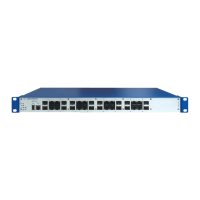
